SUMMARY
This is AI generated summarization, which may have errors. For context, always refer to the full article.
MANILA, Philippines – Don’t know if your house will collapse during an earthquake? A new tool allows you to check for yourself.
Launched by the Philippine Institute of Volcanology and Seismology (Phivolcs) and the Japan International Cooperation Agency (JICA), “How Safe is My House? Self-check for Earthquake Safety” is a 12-point questionnaire homeowners can use to assess the earthquake readiness of their house.
The checklist was tailored for concrete hollow block (CHB) houses, one of the most common types of Philippine homes because of its low construction cost. See the complete document here.
The features recommended by the checklist are based on the National Buiding Code and Structural Code of the Philippines. They were tested by a full-scale shaking table experiment conducted by Filipino and Japanese experts.
Phivolcs plans to launch a version for a wooden house as well as a computer simulation program to enable enginners and architects to test the earthquake readiness of their designs using special software.
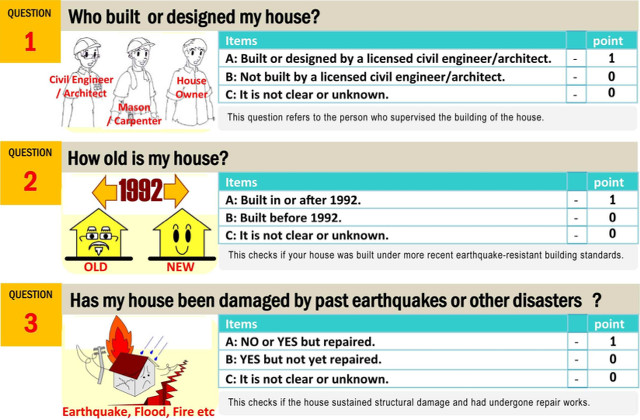
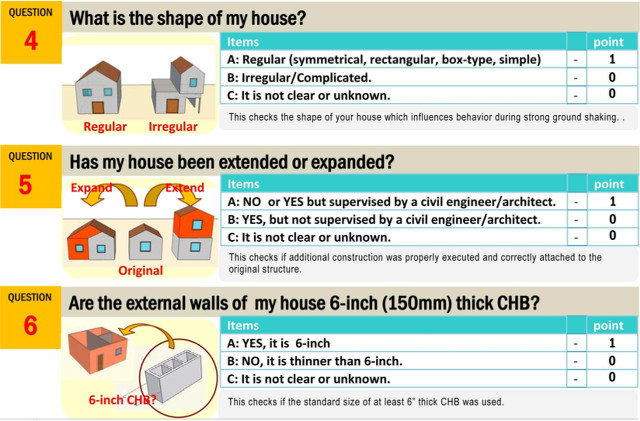
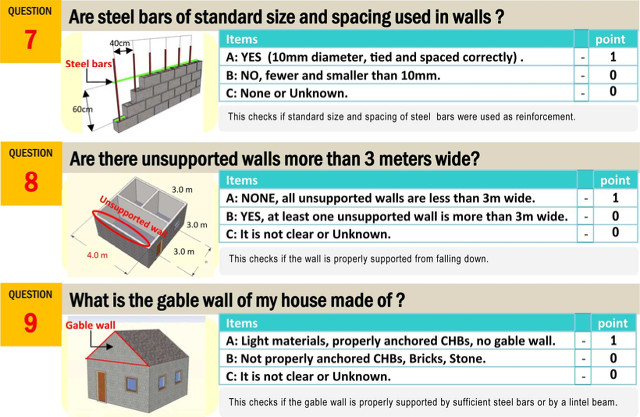
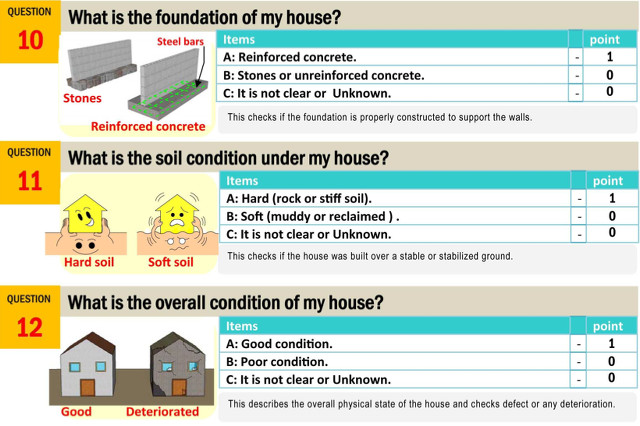
The higher the total score, the more earthquake-resistant the house:
- 11-12 : Though this seems safe for now, please consult experts for information.
- 8 – 10 : This requires strengthening, please consult experts.
- 0 – 7 : This is disturbing! Please consult experts soon.
The features
An “earthquake-resistant” house is a house that will not collapse even in the face of an intensity 9 earthquake, said Phivolcs Director Renato Solidum.
So what makes a house earthquake-resistant?
A house designed by a civil engineer or architect instead of a mason or carpenter has a higher chance of not collapsing because the expert is expected to follow the Building Code and Structural Code.
A house built in 1992 or after is also more earthquake-ready because it was the year after more earthquake resistance standards were introduced to the codes.
A regular-shaped house – symmetrical, rectangular, box-type – is also more stable than an irregularly-shaped house.
“The shape influences the behavior of the building during ground shaking. If it’s irregular, the house will be twisted and various parts will move in various ways, so it’s not good,” explained Solidum.
| Features | Properly-built | Improperly-built |
|---|---|---|
| Concrete hollow block wall | 6 inches thick (400 x 200 150mm) | 4 inches thick (400 x 200 x 100mm) |
| Vertical steel bars | 10mm diameter spaced 40cm from each other | 6mm diameter spaced 90cm from each other |
| Horizontal steel bars | 10mm diameter spaced 60cm from each other or laid every 3 layers | 6mm diameter spaced 60cm from each other or laid every 3 layers |
| Mortar mix (Cement : sand) | 1:4 Compacted | 1:4 Not compacted |
| Roof frame/roofing | Wood/Galvanized iron sheets | Wood/Galvanized iron sheets |
The building materials used also determine the strength of the house. Walls made of 6-inch (150 mm) thick concrete hollow blocks are much stronger than the cheaper but more commonly used 4-inch blocks.
The reinforcement of vertical and steel bars embedded in the walls are just as important. Vertical bars have to have a diameter of 10 mm and must be only 40 centimeters away from each other. Many substandard homes have thinner bars (6 mm) spaced farther away from each other (90 cm).
For horizontal bars, they must be 10 mm thick and spaced 60 cm from each other (or between 3 layers of concrete hollow blocks).
Walls that are more than 3 meters wide must be supported to prevent it from falling down during a quake.
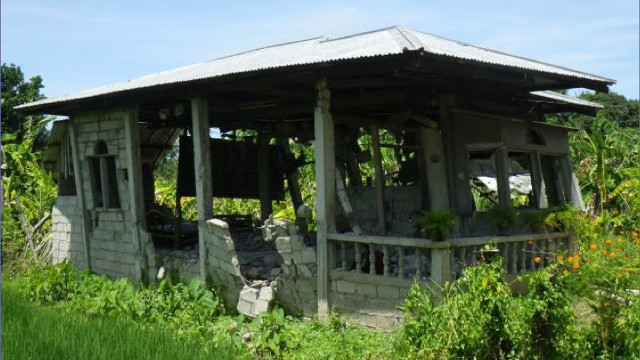
Many Filipino homes also have a gable wall, or the triangular area between the A-frame of the roof and the wall around the house. To keep the gable wall from falling (as it did in the video), materials for it must be light. If it’s made of concrete hollow blocks, they must be well-anchored to the rest of the house. Houses with no gable wall are far safer. Examples of these are houses with flat roofs.
A foundation of reinforced concrete would resist the shaking of an earthquake making it the ideal foundation for a house. This much more stable than a foundation of stones or unreinforced concrete.
The kind of soil on which the house is built is another factor. Rock or stiff soil is more stable while muddy or reclaimed soil literally puts your house on shaky ground.
The last important gauge is the overall condition of the house. A well-maintained house with damages from previous earthquakes or other calamities repaired stands a much better chance of surviving a quake than a deteriorated one. – Rappler.com
Being situated in the Pacific Ring of Fire, the Philippines is no stranger to earthquakes. If you need improvements to make your house more earthquake proof, click here for great deals on home improvement items that you would definitely need.
Add a comment
How does this make you feel?
There are no comments yet. Add your comment to start the conversation.